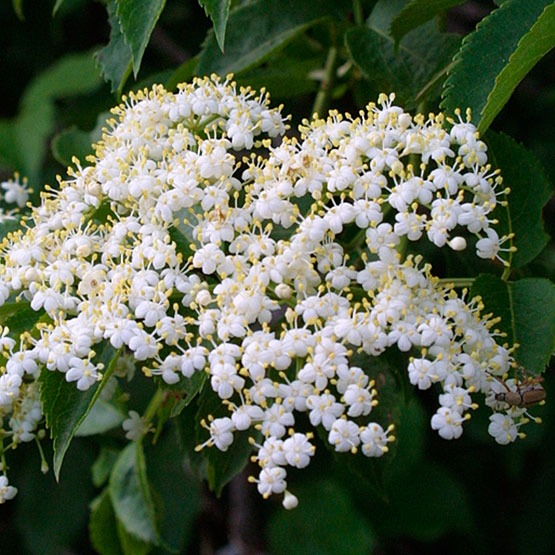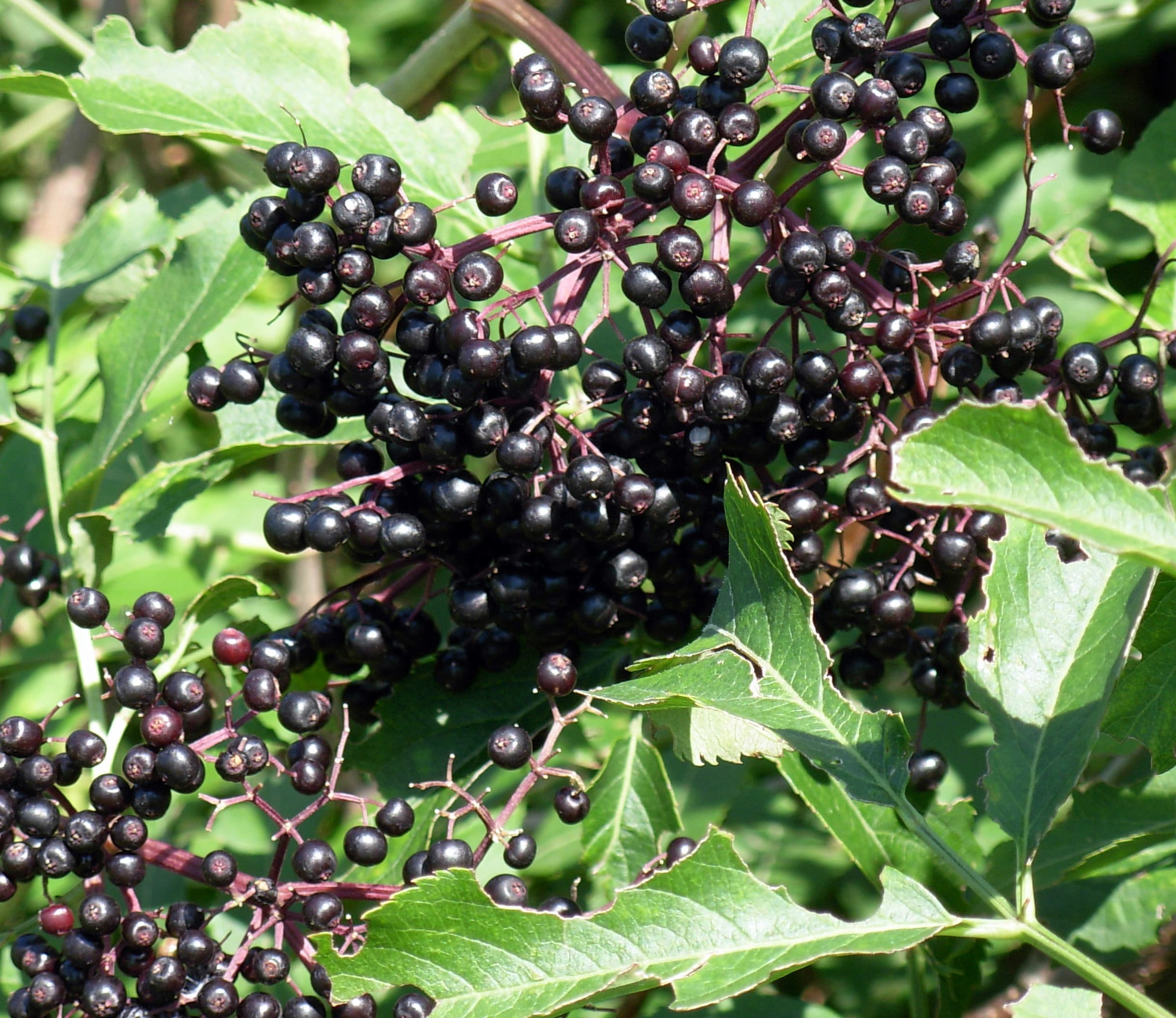
Plant Profile: Elder (Sambucus nigra)
From Herbalist Erin Smith
As winter gets closer, the cold and flu season is upon us. One of the best herbs for this season is Elder (Sambucus nigra). It offers gentle yet powerful support to promote your supports your body’s natural ability to fight off all the germs that seem to lurk everywhere this time of year. Elder has a rich history of use and was often referred to by rural residents in Europe as the “medicine chest of the country.”
Today, the flower and the berry are the most commonly used parts. These both provide gentle, safe, yet effective support for optimum health.
The honey-scented flowers, which appear in early summer, were traditionally used as a tonic and supports healthy metabolic function, eliminating wastes and toxins. An infusion of the dried flowers is diaphoretic and encourages your natural fever response, especially those associated with flu. Elderflower vinegar or oxymel (vinegar and honey) soothes sore throats. It is calming and gentle enough for children. Externally, elderflower water is used as a base for lotions or as a facial toner and can be applied to wounds to promotes healing. A cordial from the flowers is a popular health-promoting tonic throughout Europe.
In the late summer, Elder shrubs are heavy with dark purple berries. They get their deep rich color from anthocyanins, which are powerful antioxidants. Because of this rich color, elderberries were traditionally used to help “build blood” in weak and anemic individuals. It is a bit of an immune tonic, gentle enough to take frequently and over long period to support a healthy immune response. This property, along with its ability to get in and wipe the bad guys out, makes it a great all around winter remedy. Even better it is gentle enough for kids and it tastes great! It can be taken daily to help maintain a healthy immune system or more frequently when illness strikes. It is one of the best herbal supports for discomforts associated with the flu. The berries (and the flowers too) can be used to get in and loosen thick and stuck mucus associated with respiratory conditions.
Elder is also one of our great medicine foods so don’t forget to use it to make jams, pies, syrups and more!
Note: Elderberries should always be used dried or cooked. There are a number of species of elder and some of them can be toxic. Make sure you are using Sambucus nigra or a species that has black/purple berries.
Elderberry Chutney
- 8 cups of elderberries
- 2 cups apple cider vinegar
- 2 large onions
- 2 apples, chopped
- 1 cup of honey (or Rapadura sugar – to taste)
- 1/2 to 1 inch piece of fresh ginger root
- 1 tbsp. of cloves
- 1 tsp mustard seed
- 1 clove garlic
- 1 tsp. cayenne
- 2 tsp. salt
Bruise the elderberries and combine in a saucepan with chopped onions and apples. Add the vinegar, honey, spices and salt. If using honey, it is much sweeter than sugar, so it’s best to start with half the amount listed and add to taste. Gently bring to a boil then reduce to a simmer. Cook, stirring frequently, until the mixture gets thick. Let cool and serve. Store covered in the refrigerator.
A version of this article first appeared on integrativebotanical.com and is used with permission.
You can learn more about Integrative Family Medicine of Asheville on our “about’ page!

